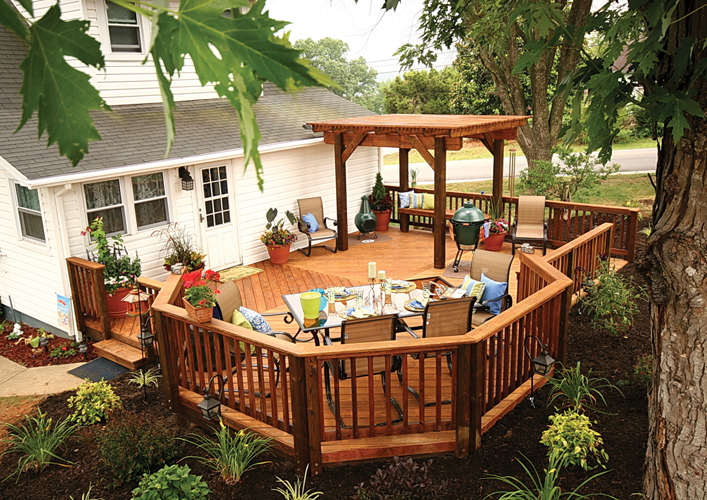Choose Southern Pine for Outdoor Projects

|
According to the National Association of Home Builders' Remodeling Market Index (RMI), while home starts and sales are down significantly, homeowners continue to want to update and improve their current homes, which keeps the remodeling market going strong.
The most popular outdoor remodeling projects, according to a recent RMI survey, are decks, porches and patios, which isn't much of a surprise: the U.S. Census Bureau reported that $2.5 billion was spent on decks in 2006.
"Homeowners tend to live in a house for a while to get the feel of it and learn the house's personality before jumping into a large remodeling project," said Brad Staggs, HGTVPro.com and DIY show producer and host. "Decks and other outdoor structures are often added years later, when homeowners have had a chance to research projects and materials and are very clear on what they want."
One of the most popular outdoor building materials is pressure-treated Southern Pine. Its unique cellular structure allows it to accept preservative treatment better than any other species, resulting in a strong, durable wood that will stand the test of time. Southern Pine is a beautiful choice for backyard projects, too: the knots and grain present in each piece of lumber offer more than just the "look of wood": this is real wood, the only building product made by Mother Nature.
Pressure-treated Southern Pine is safe for use around family and pets, too. Scientific tests prove that the preservatives used in pressure-treated wood pose no measurable risk to people or animals.
A backyard deck — or any outside building project — should blend in with its natural environment. Southern Pine is a truly renewable resource: the trees come from healthy, flourishing managed forests, where many trees are planted for each one used. Sustainable forestry practices ensure that Southern Pine forests will be around for centuries to come. The energy used to produce Southern Pine lumber is much less than for other building product options, and the renewability of wood stands in stark contrast to the finite resources offered by petroleum-based products (such as plastic and vinyl).
So where to find good information on the many uses of Southern Pine? "The folks at the Southern Pine Awareness Network (SPAN) have a great Web site," Staggs added. "It's chock-full of project plans, gorgeous color photos, environmental information on wood and some great case histories. Plus there's a Homeowner Forum where consumers can ask any wood-related question and receive an expert answer. Visitors to the site will soon see that choosing Southern Pine is more than just a wise choice — it could be the start of something wonderful!"
For project plans and ideas, please visit the Southern Pine Awareness Network at www.spanpine.com.







